A Foodie’s Guide to the Local Dishes of Rome

When it comes to food, few cities in the world can rival the culinary scene of Rome. From carbonara and amatriciana to crispy thin-crust pizzas and creamy gelato, Rome offers a feast for the senses that can leave even the most discerning foodies in awe. With its deep-rooted gastronomic traditions and vibrant modern food culture, Rome is a city that never fails to excite and delight. In this foodie’s guide to the local dishes of Rome, we will take you on a journey through the streets of Rome, exploring the city’s local dishes, hidden culinary gems, and top foodie destinations.
Choosing where to eat
We recommend you to avoid eating in restaurants near the city’s main tourist attractions. And you can imagine the reason; the price. Be sure to eat in Trastevere and Testaccio district, in order to eat like a Roman.
You may find dining in Trastevere a bit more expensive, since it is popular among tourists, but the quality of the food is great (the two of us ate three whole pizzas there and not even half a slice was left).
1. Amatriciana

Amatriciana sauce, named after the Italian town of Amatrice, is a popular part of the “three most famous Roman pasta” alongside carbonara and cacio e pepe. The sauce was created in the 17th century by adding tomatoes to the gricia sauce, which consists of guanciale (cured pork jowl) and pecorino cheese. The sauce is often served with spaghetti or bucatini pasta and has become a classic Italian dish. The first recipe for Amatriciana was published in a cookbook by renowned Roman chef and author Francesco Leonardi in 1790. With its balance of sweet, tart, and sharp flavors, along with the heat from pepperoncino peppers, Amatriciana sauce continues to be a favorite among Italian cuisine lovers.
Recommended Places: Roscioli, Armando al Pantheon, Vecchia Roma Trattoria, Osteria Fernanda
2. Gnocchi alla Romana

Gnocchi di semolino alla Romana is a classic Italian dish prepared using semolina flour gnocchi combined with milk, eggs, parmesan cheese, and butter. The gnocchi is layered in a casserole dish and seasoned with ingredients such as nutmeg, salt, and pepper before being baked. Some chefs like to enhance the flavor by adding pancetta or ham on top of the gnocchi. This dish can be served as a starter or main course, depending on the serving size. Check Recipe.
Recommended Places: La Matricianella , Nonna Betta
3. Cacio e pepe
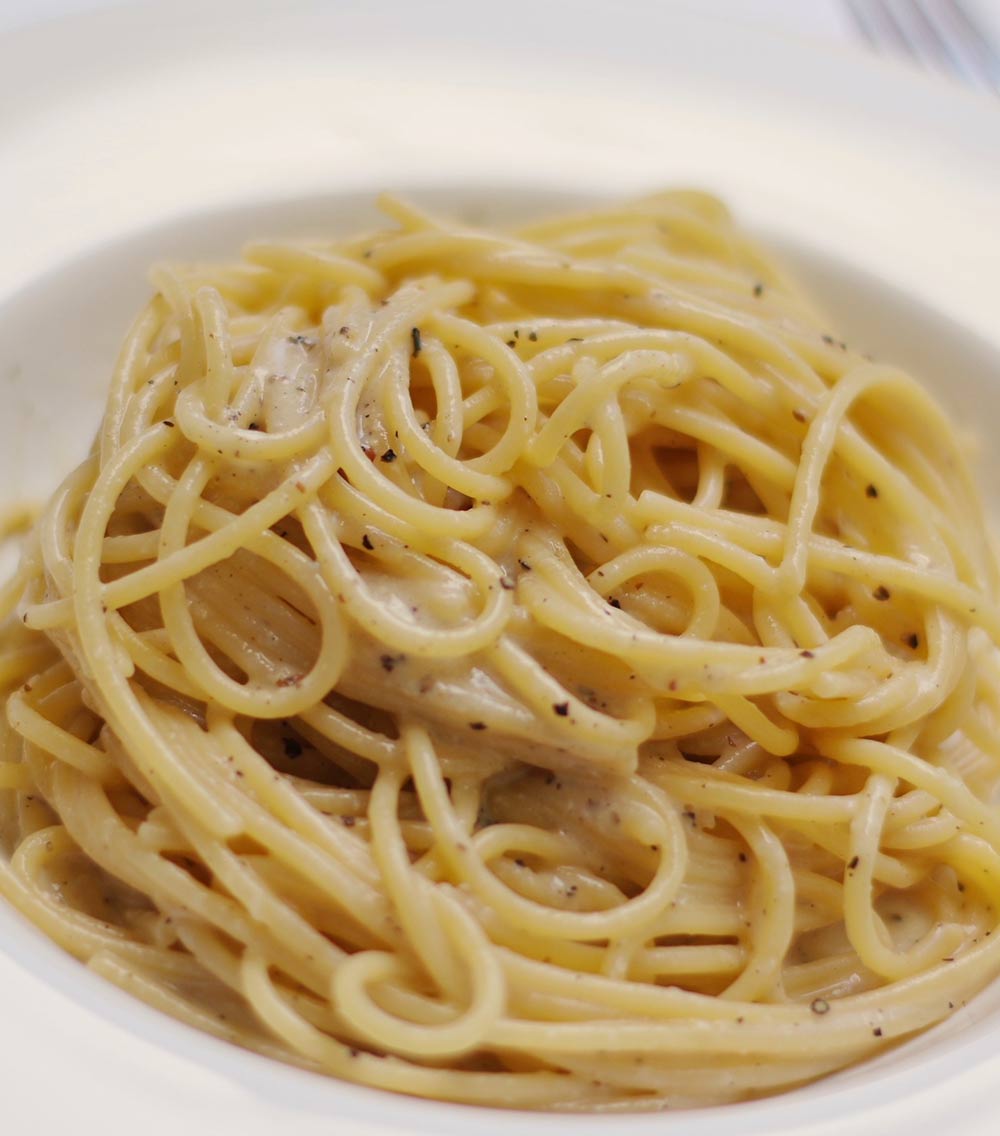
Cacio e pepe is an ancient dish originating from Rome that is often celebrated for its simplicity and satisfying flavors. The dish comprises of pasta, typically spaghetti, combined with aged Pecorino Romano cheese, salt, and copious amounts of freshly ground black pepper. Because the ingredients are durable and easy to transport, this dish was popular among Roman shepherds as it provided them with the necessary energy to perform their demanding work. Additionally, the spicy pepper helped to protect them from the cold during long nights in the fields.
Recommended Places: Felice a Testaccio, Flavio al Velavevodetto, Roma Sparita
4. Carbonara
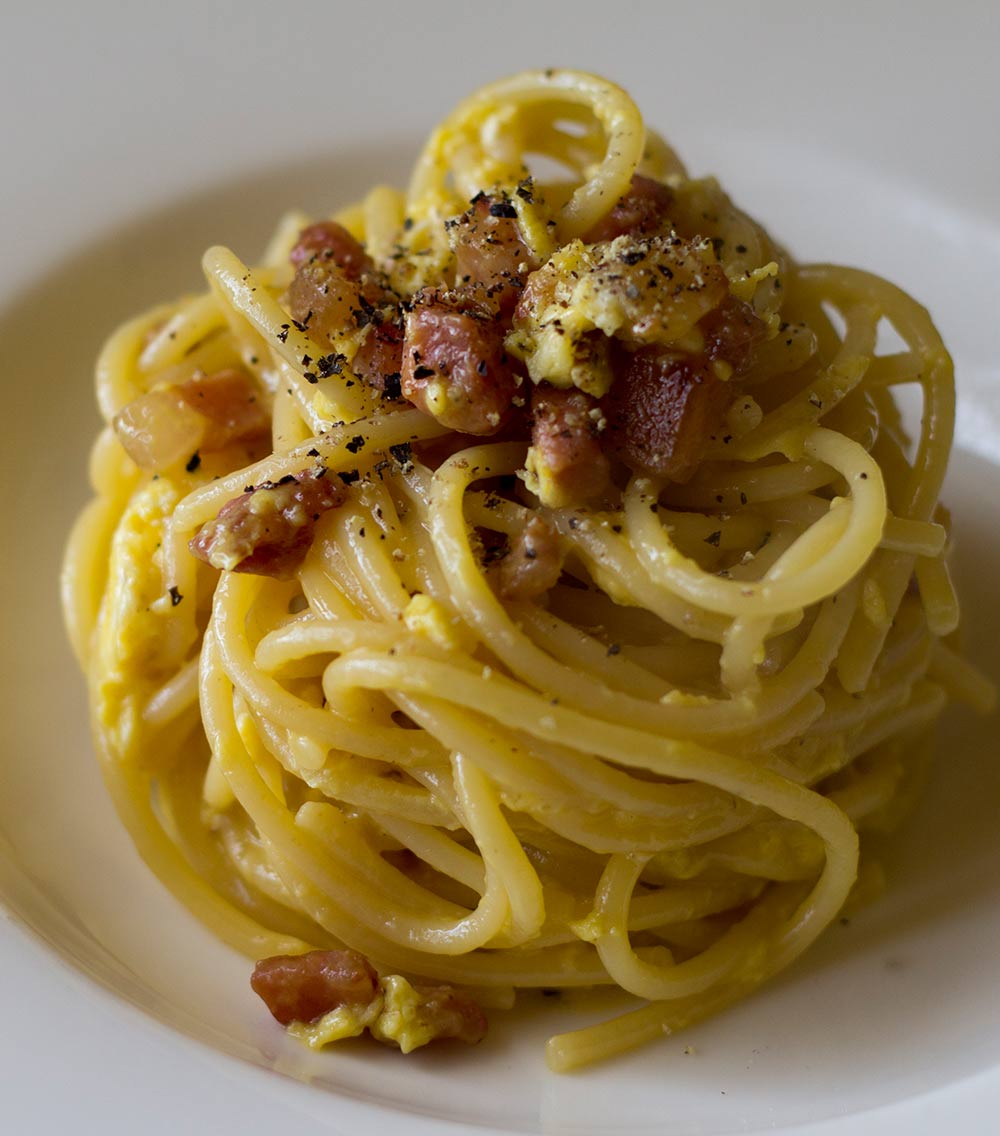
Carbonara is a classic Italian dish, popular throughout the country but originating in Rome. The recipe consists of spaghetti, guanciale, egg yolks, and Pecorino Romano cheese, making it a simple yet delicious meal. The origin of the dish is disputed, with one theory suggesting that it was created by charcoal-makers who cooked their pasta over hardwood charcoal fire and mixed it with eggs and cheese. Another theory claims that carbonara was invented after World War II, during food shortages when Allied troops distributed bacon and powdered eggs to the locals. Despite its unclear origins, carbonara remains one of Rome’s favorite dishes.
Recommended Places: Roscioli, Da Enzo al 29, Trattoria Da Danilo
5. Pizza al taglio

Pizza al taglio is a type of Italian pizza that is rectangular and sold by the slice or by weight. It originated in Rome during the 1950s when it was topped with olive oil and tomato sauce. Pizza al taglio is now a popular street food throughout Italy. To make it, the dough is allowed to rise and ferment for a longer period of time than traditional pizza, then it is baked, topped, and baked again for an evenly cooked, light, and easy-to-digest pizza.
Recommended Places: Pizzarium Bonci, Pizzeria La Boccaccia, Pizzeria a Taglio Angelo e Simonetta
6. Supplì

Supplì al telefono, a popular Roman street food, is a breaded, deep-fried rice croquette that’s typically filled with mozzarella and simmered in tomato-based meat sauce. The name “al telefono” comes from the long strings of melted cheese that resemble telephone cords when the croquette is broken open. The name “supplì” has been mentioned in written records since 1874 and is said to have originated during the Napoleonic occupation of Italy. Supplì are similar to Sicilian arancini but are distinct in their use of mozzarella and pre-simmered rice. These crispy rice balls are often enjoyed as a snack or appetizer and are one of Rome’s beloved street foods. Check Recipe.
Recommended Places: L’Arcangelo, La Gatta Mangiona, Pizzarium Bonci
7. Rigatoni con la pajata
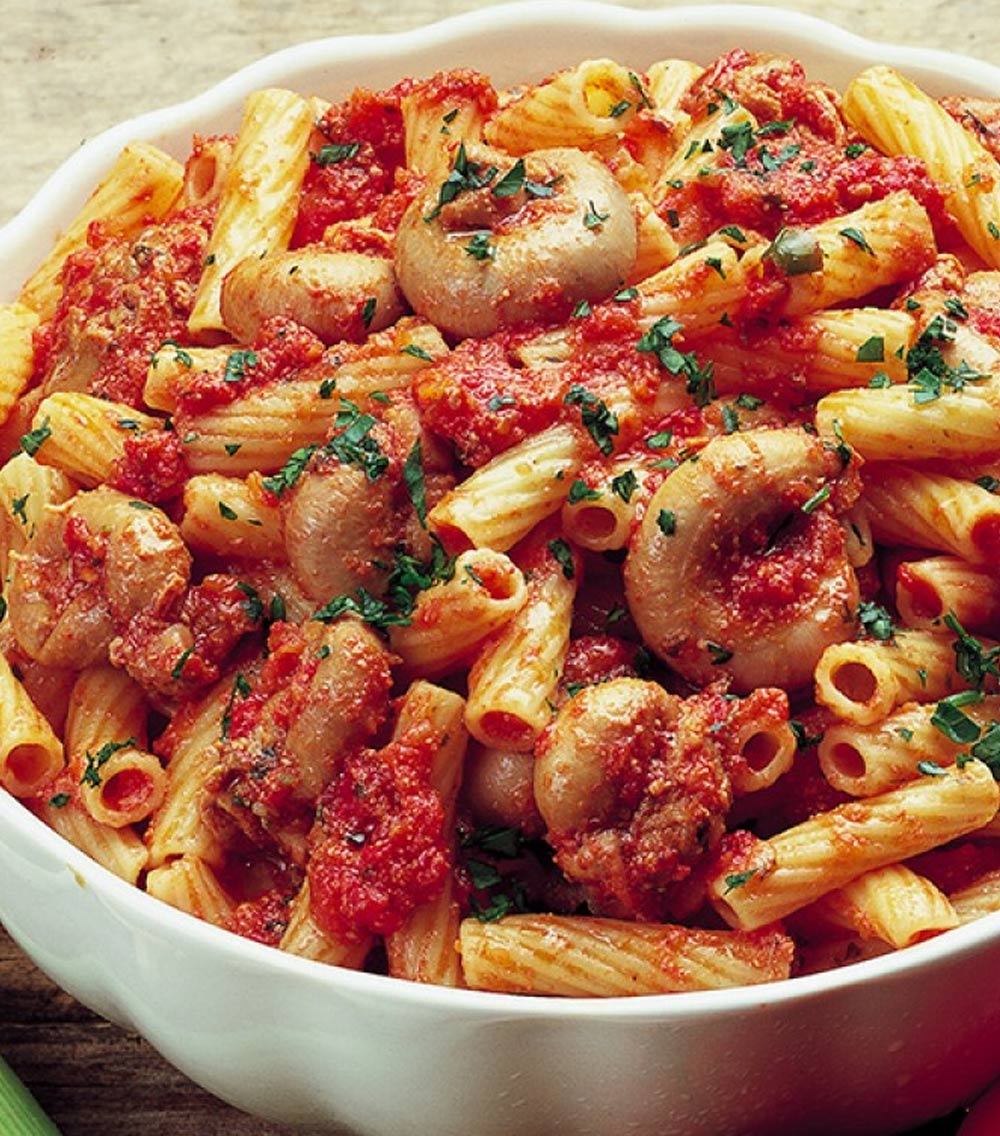
Rigatoni con la pajata is a traditional Roman dish made with the intestines of milk-fed calves, which are cooked with vegetables, wine, and spices to create a creamy sauce. The dish is served over rigatoni pasta and topped with grated pecorino cheese. Although it is not as commonly found in restaurants as it once was, it remains a beloved dish among those who appreciate its unique flavor. Check Recipe
Recommended Places: Checchino Dal 1887, Agustarello, Trattoria Perilli
8. Saltimbocca alla Romana
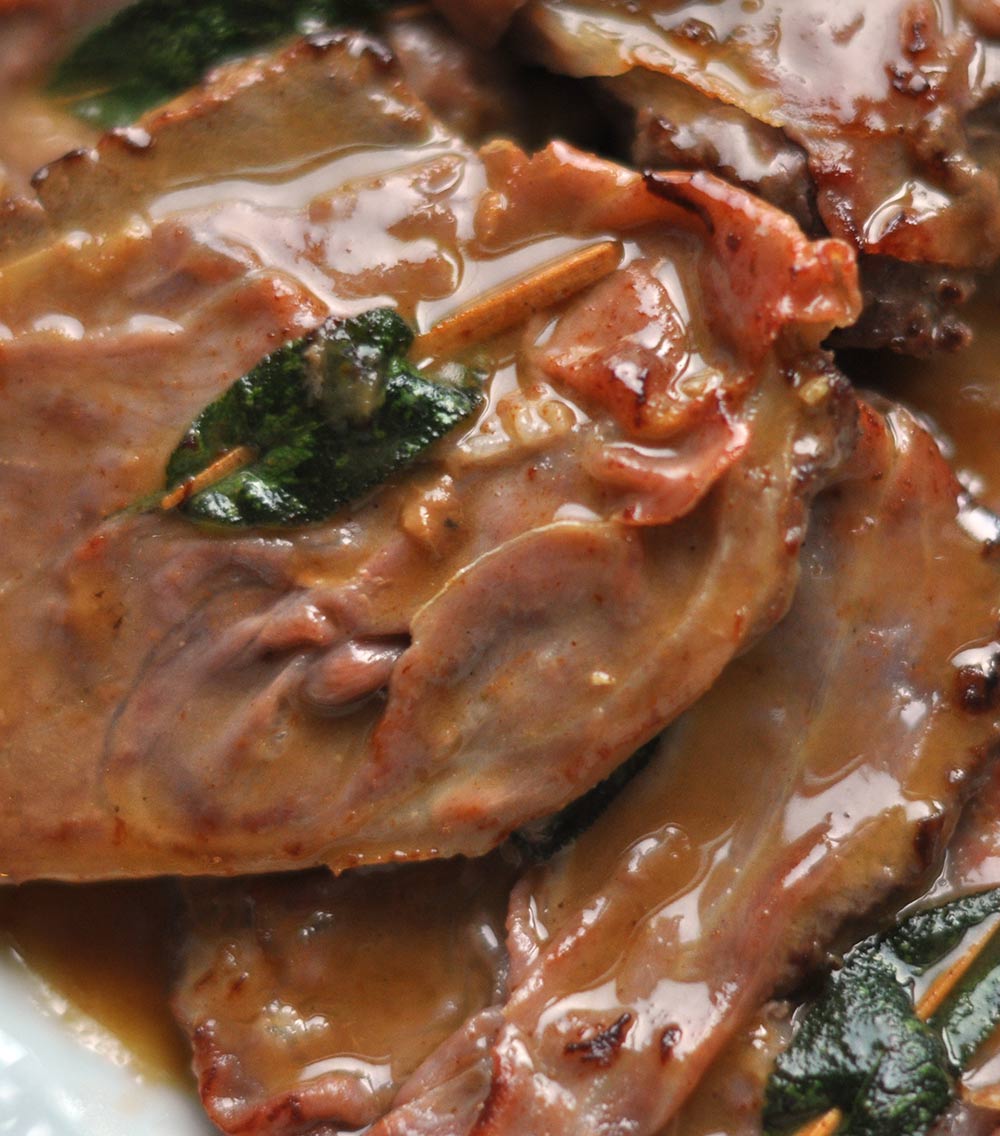
This dish is a traditional Roman recipe named after its ability to make flavors burst in the mouth. The main ingredients include tender, pan-fried veal cutlets wrapped in prosciutto, flavored with sage and sautéed in white wine. Although the recipe dates back centuries, the first written record was found in Pellegrino Artusi’s 1891 cookbook. Despite its Roman name, it is said to have originated in the Lombardian city of Brescia. Saltimbocca alla Romana is a beloved dish in Rome and is often served with a side of green vegetables, such as Roman-style green peas.
Recommended Places: Armando al Pantheon, La Matricianella, Trattoria Da Teo
9. Trippa alla Romana
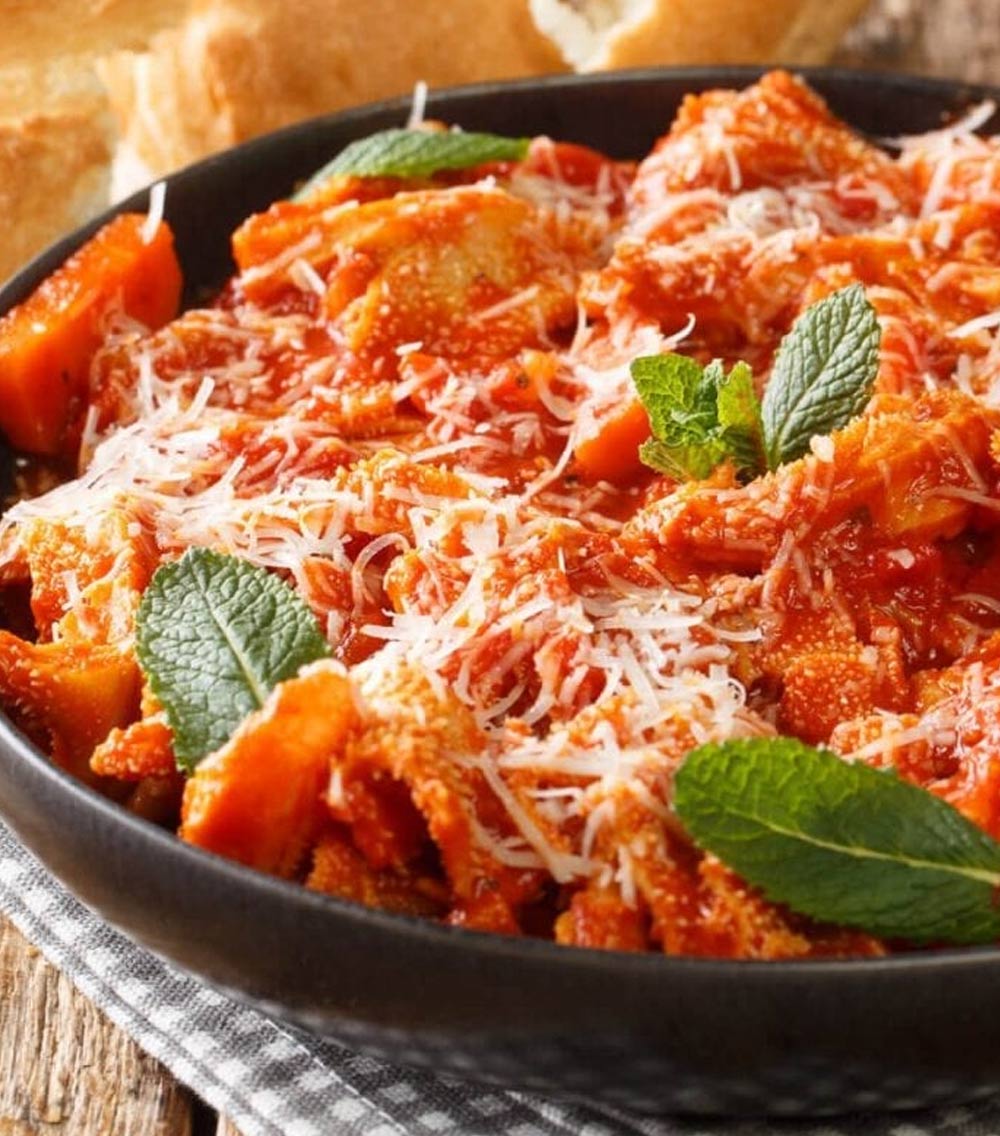
This recipe involves cooking tripe in a tangy tomato sauce mixed with fresh herbs and finely chopped garlic and onions. To complete the dish, it is recommended to sprinkle grated cheese such as Parmigiano Reggiano or Pecorino Romano on top just before serving. Check recipe.
Recommended Places: Checchino Dal 1887, Mordi & Vai
10. Maritozzo
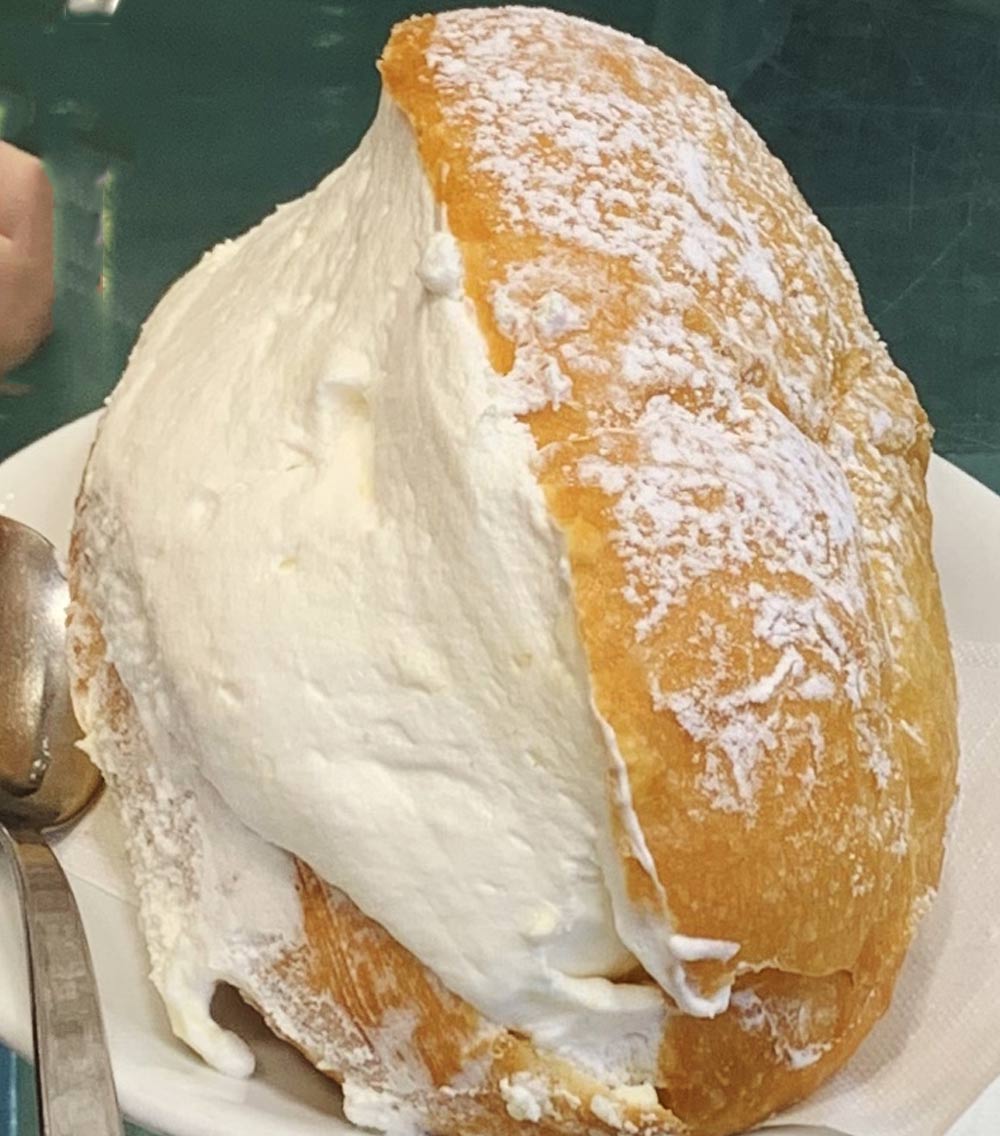
Maritozzi are sweet buns with whipped cream that date back to ancient Rome and are a popular breakfast item in Rome’s pastry shops. They are made with yeast, flour, eggs, sugar, butter, salt, fresh cream, and optional ingredients such as lemon and orange zest, candied orange peel, raisins, and pine nuts. The buns are named after young grooms-to-be who gave them to their fiancées and were the only sweets allowed to be consumed during Lent in the past.
Recommended Places: Pasticceria Regoli, Roscioli Caffè, Il Maritozzaro
Eat like a Local in Rome
-Never have cappuccino with a meal, as it is considered a morning beverage.
-Don’t dine too early. It is advisable to follow the typical meal timings in Rome to make the most of your culinary experience. Breakfast is typically served between 6 AM to 9 AM, followed by an aperitif with snacks around 11 AM. Lunch hours are usually between noon to 2 PM, and dinner is typically served from 8 PM to 9:30 PM. Another aperitif is often enjoyed between meals around 6 PM.
-Trattorias, osterias and ristorantes are not the same
-Take time to enjoy your food. Even if you do not have time for a proper sit-down lunch you can still choose to eat pizza al taglio.





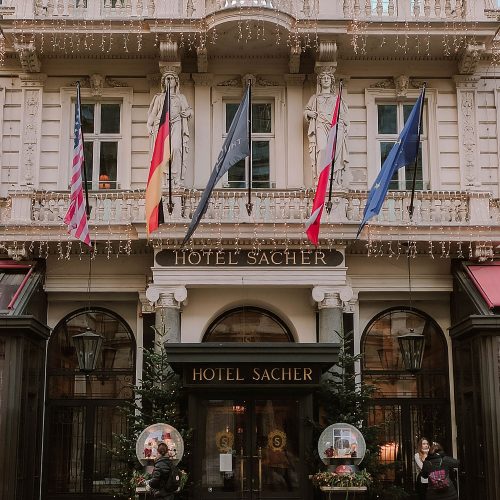
No Comments